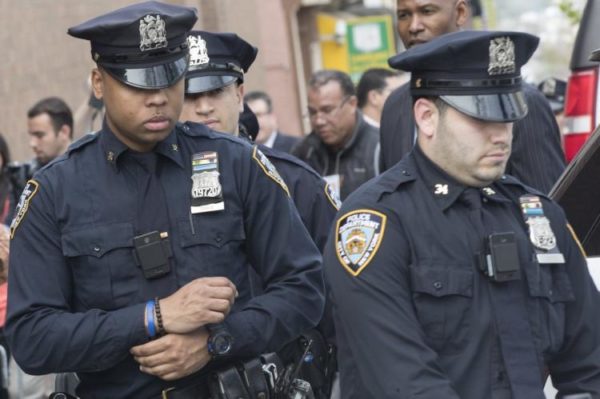April 23, 2015
By Marc Bussanich
New York, NY— The president of the Amalgamated Transit Union told media on Wednesday afternoon that there are blind spots in the current Vision Zero law that requires the City Council to amend the legislation, or else more MTA bus drivers may face arrest in the wake of a tragic accident.
Larry Hanley, ATU’s International President, said also that the MTA has to make some simple engineering changes to its current fleet so that the blind spots in their design no longer obscure pedestrians crossing the street. To that end, he introduced a safety expert, Brian Sherlock, who explained how transit agencies like the MTA could retrofit their buses so that bus operators’ vision isn’t obscured.
On a projector screen, he pointed to an image of a bus not unlike the one involved in a tragic accident on February 13 when a 15-year old girl was trapped under the left front wheel as she was crossing the intersection of Union Avenue and Grant Street in Williamsburg, Brooklyn. He said the essential problem is the design of the driver’s side-view mirror, that can be over 14 inches wide, and the pillar that supports it. He then pointed to another image of how buses were designed back in the 1950s and 1960s that used different front window designs supported by narrower pillars and space between the side mirrors, providing greater visibility to drivers.
In the accompanying video, we interviewed Mr. Hanley about the types of solutions that transit agencies can implement immediately to eliminate any kind of obstruction in the bus driver’s field of vision.
“We’re here today calling on the MTA to eliminate the obstructions in the front of buses and we’re calling on the City Council and the [de Blasio] administration to revisit the Vision Zero law, and correct it. Back in the 1940s through the 1960s buses were designed to have a clear, front window. But over the years because of a manufacturing problem the design was changed, blocking the driver’s view,” said Hanley.
According to Hanley and the union, the union showed a video from the driver’s seat during a turn to the chief engineer of a bus manufacturer that supplies buses to the MTA. The engineer was mortified to see that the pillar was blocking the operator’s view. The engineer then re-engineered the pillars at a cost of $300 so that they were no wider than the space between the eyes, which eliminated the blind spot.
With the MTA planning to purchase 1,800 new buses worth $2 billion as part of its next five-year capital program, Hanley said in the video that the MTA could change the engineering of new buses and retrofit the existing fleet to eliminate the blind spots.
“That’s the only thing that will fix it," Hanley said.
@marcbuss marc@laborpress.org



